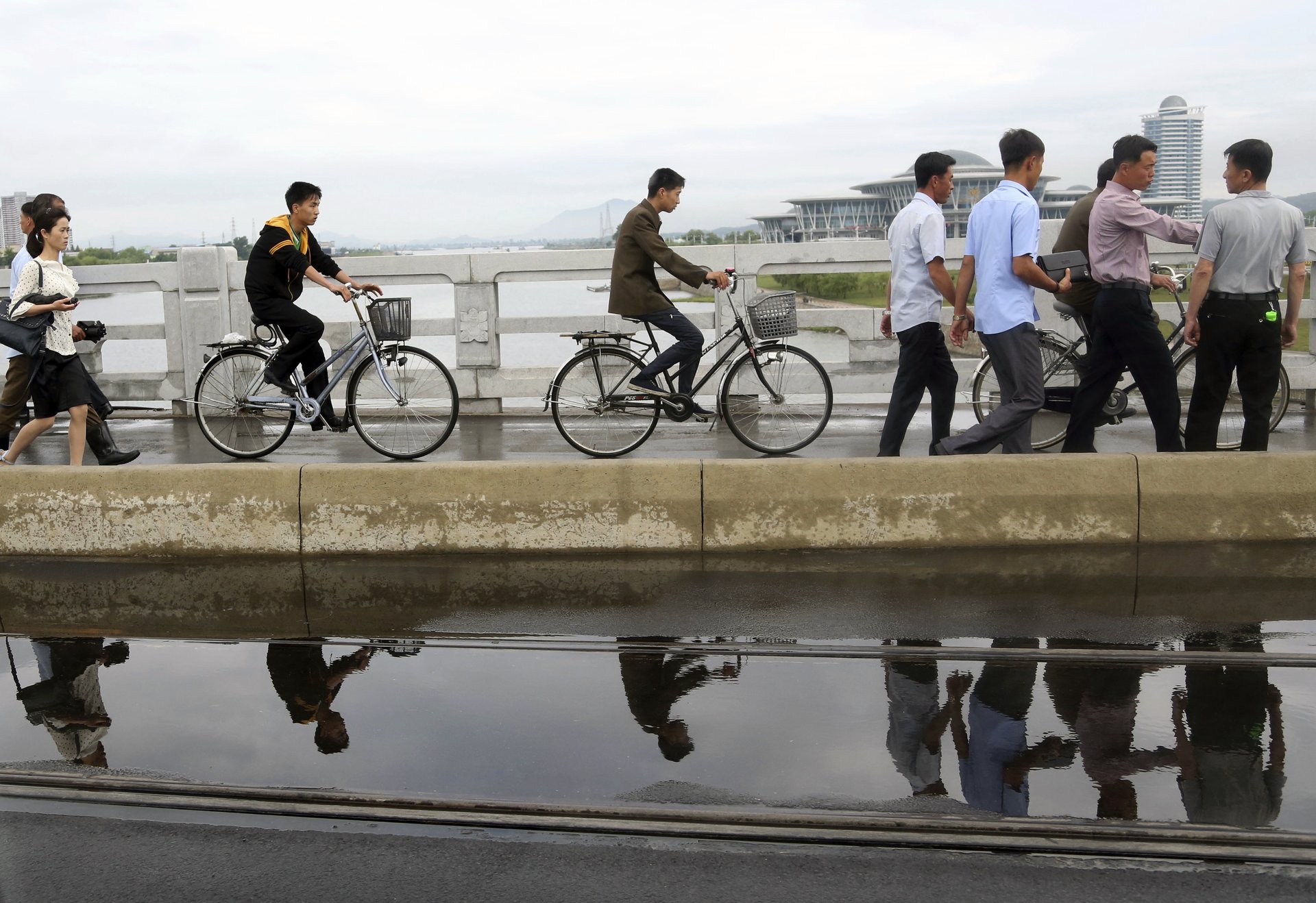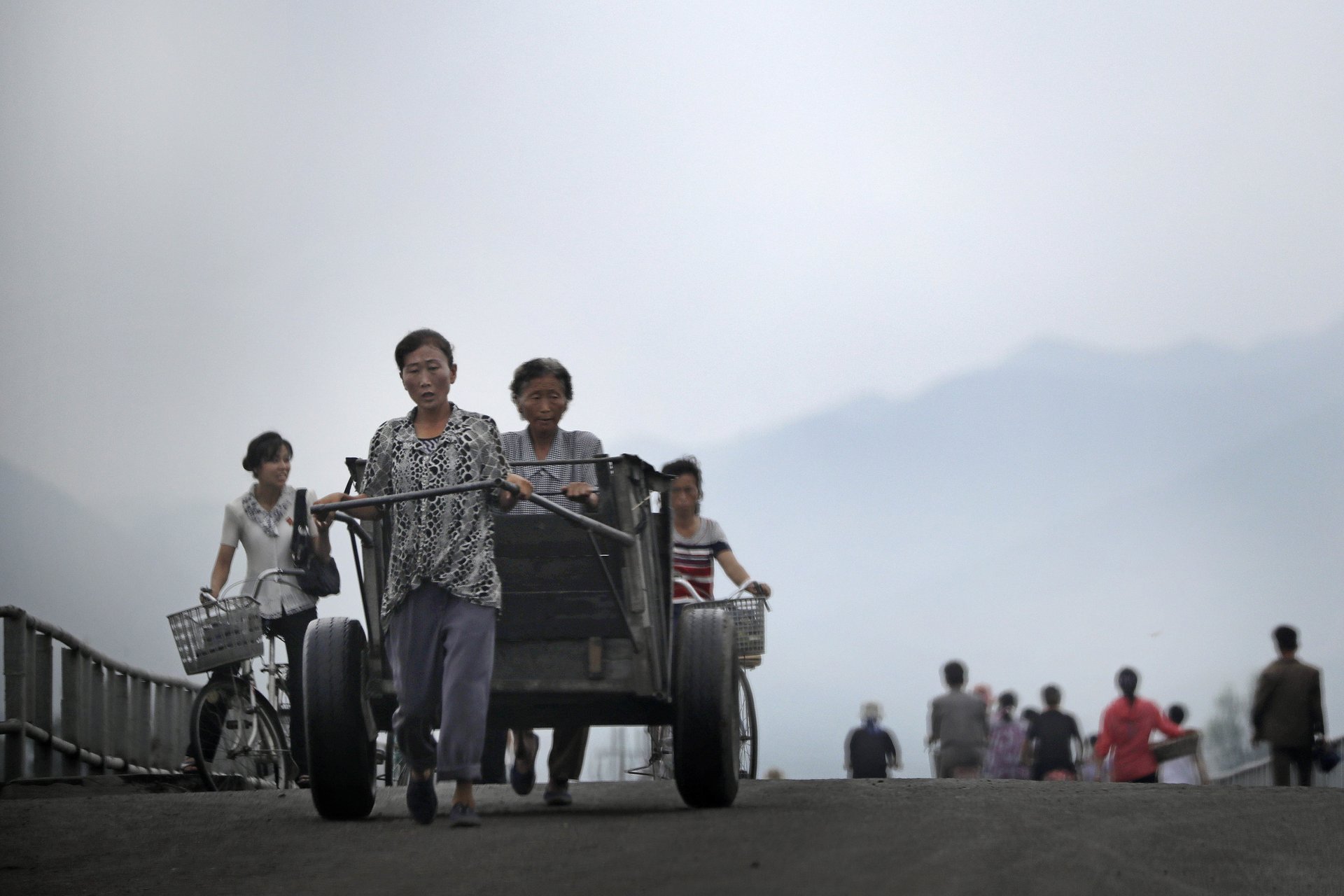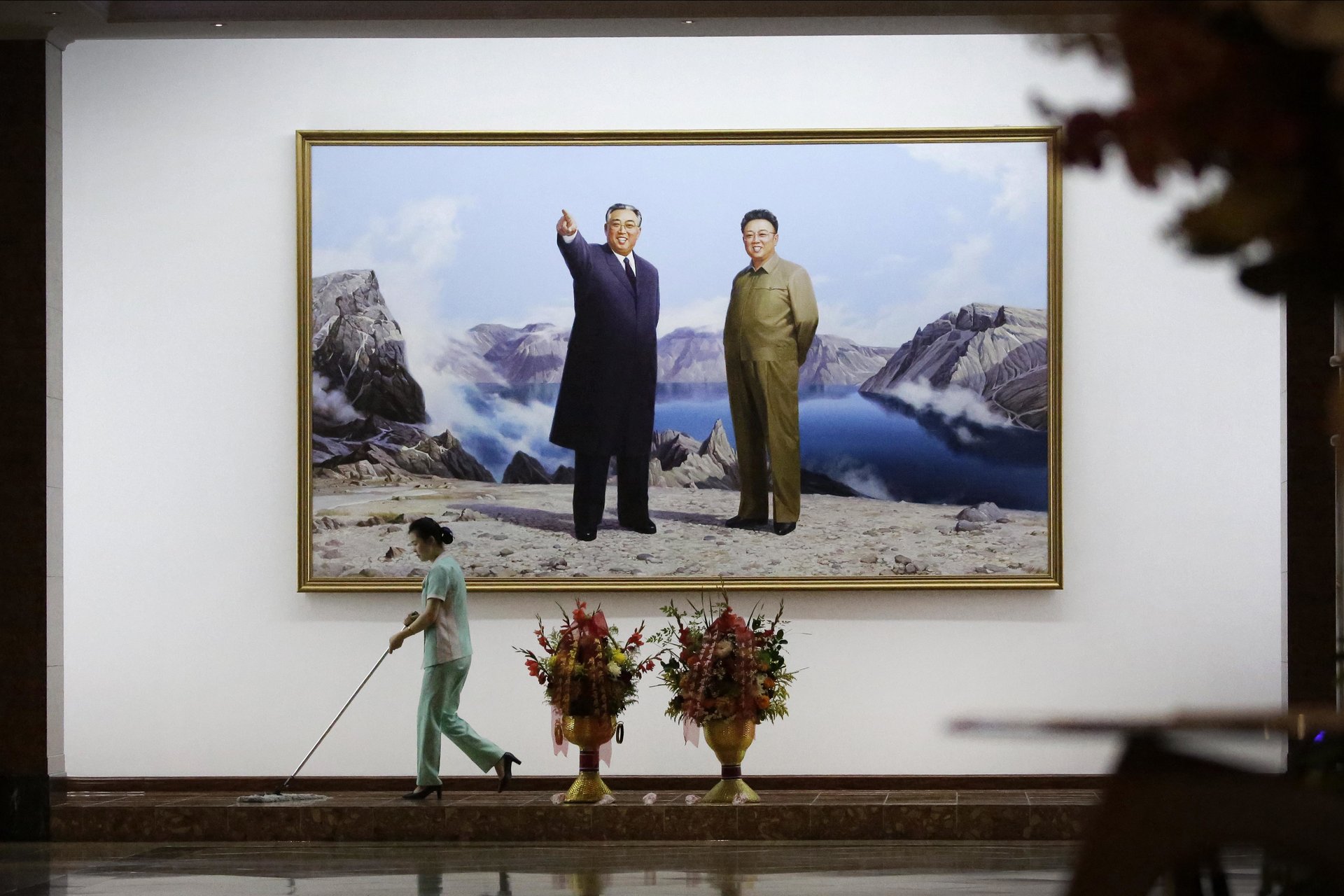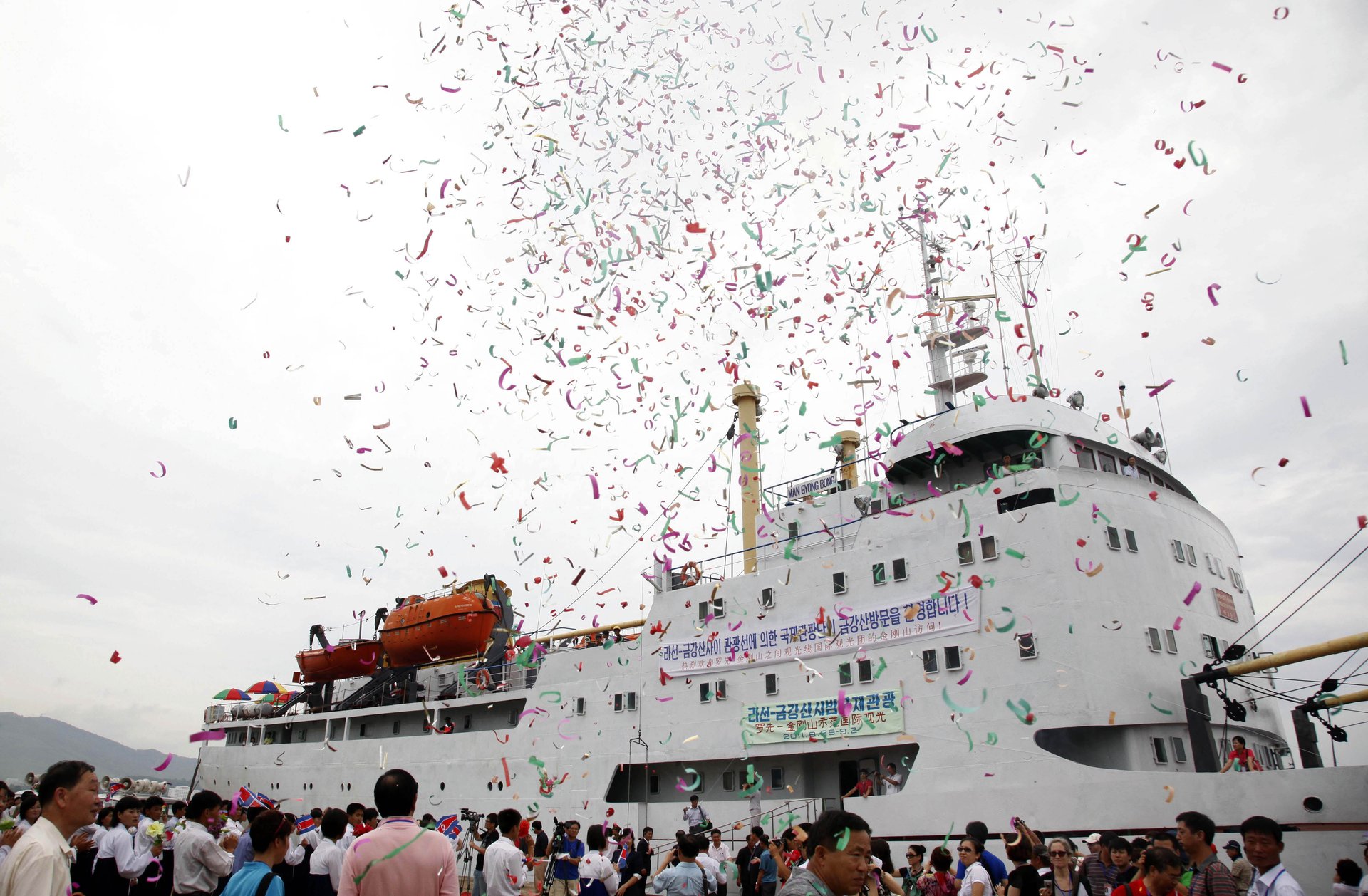When North Korean leader Kim Jong-un and US President Donald Trump met on June 12 in Singapore, it became apparent that the Democratic People’s Republic of Korea (DPRK) can attract sums of foreign investment in exchange for steps toward denuclearization. US Secretary of State Mike Pompeo promised private sector money to help fix North Korea’s failing electrical grid, for example. South Korea has explored similar proposals, including major infrastructure investment and growth corridors.
All of this, according to Pompeo, is to come after the complete, verifiable and irreversible denuclearization (CVID) of the country — something few analysts expect the North Koreans to agree to. Indeed, since Singapore, Kim has so far refused to give any details about his weapons of mass destruction (WMD) program — which includes nuclear as well as biological and chemical weapons. Outsiders still do not know how many nuclear warheads, missiles, launchers, centrifuges, and kilograms of plutonium or highly enriched uranium North Korea has. Safety measures, missile ranges, and command and controls protocols are all unknown as well.
But Kim Jong-un is serious about growing the economy. Secure in his nuclear deterrent, he has stated his commitment to expanding wealth and prosperity within his country. His government’s program to date has been a dual line of nuclearization and economic growth: byungjin. And certainly, Kim’s government has not witnessed a repeat of Kim Jong-il’s catastrophic economic mismanagement, which triggered a famine that killed 10 percent of the country’s population.
Given North Korea's dark financial past, it’s hard to imagine a brighter future for its economy — although Kim certainly can. A North Korean reconciliation with the international community over WMD could unlock investment and access to the global economy in areas such as tourism and infrastructure. And, in certain sectors of the North Korean economy, there are already signs of decentralization and growth. In seeking denuclearization, President Trump could leverage Kim’s desire to grow the Northern economy. The following review covers the basics of the North Korean economy and the current sanctions regime, and outlines several post-sanctions scenarios that could emerge if the current détente and normalization efforts succeed.
Given North Korea's dark financial past, it’s hard to imagine a brighter future for its economy — although Kim certainly can.

The Northern Economy
It’s worth beginning with a caveat: any measures of North Korean economy must be viewed with skepticism. It’s well known that North Korea does not publish economic data of its own. The numbers we have are crude estimates relying on a mix of national budget spending figures, defector testimony and satellite forensic work; “indicators” include everything from the amount of smoke seen rising from chimneys to the number of footsteps in the snow. Not surprisingly, estimates vary widely. The Bank of Korea, South Korea’s reserve bank, estimates the Northern economy to be almost twice the size of the United Nations’ assessment. As one analyst puts it, the North Korean economy is an “extremely inefficient half-market, half-command economy.” It is not clear what percentage of GDP — estimated at around $40 billion (all dollars in US currency) — is state or private.
The North’s primary economic activities are mining, some heavy industry, agriculture and fishing. Despite modest per annum GDP gains of between one and four percent over much of the past half-decade, per capita gross national income (GNI) in 2016 was just $1,342 (1.46 million KRW), less than five percent of South Korea’s GNI. North Korea’s economy contracted by 3.5 percent in 2017, its largest one-year decline since 1997, when the economy contracted 6.5 percent in the throes of famine. And it comes just one year after a 3.9 percent increase, the country’s highest one-year growth in GDP a decade. This decline suggests the sanctions are biting — targeting North Korea’s top-earning exports, such as coal, minerals and textiles.
Back in the late 1950s and 1960s, when North Korean economic development outpaced the South’s, North Korea had one of the most extensive public distribution systems among the twentieth-century communist economies. This system was bolstered by generous support from the Soviet Union. However, when Soviet support dried up after the Cold War, North Korea refused to implement the structural reforms necessary to adapt. This decision had dire consequences, when, in the mid-1990s, up to one million people died in one of the worst famines of the century. As a result, North Korean people turned to their own devices and began to engage in private market activities.
As billons in aid and relief poured into North Korea in the late 1990s and early 2000s — a period of détente between the two Koreas known as the “Sunshine Policy” — North Korea tried, unsuccessfully, to re-establish central distribution and disincentive market activity. A country-wide currency re-evaluation in 2009 was a thinly disguised attempt to wipe out the earnings of North Korea’s entrepreneurial class. This policy was quickly walked back after Pyongyang realized it could not revive the public distribution system over the now-entrenched small-scale market economy.
The market economy has expanded — even thrived — under Kim Jong-un. He is less paranoid than was his father and predecessor, Kim Jong-il, about its potentially deleterious effects on government control. Kim Jong-un has not broadly cracked down on private transactions or sought to undermine the earnings of entrepreneurs. Foreign currency bank accounts, once explicitly forbidden by regime founder Kim Il-sung, are legal and widely used. Farming, in which some 40 percent of North Korean households work, enjoys more autonomy than ever, and farmers, along with textile and retail firms, can set their own prices. Managers of state-owned enterprises can invest in other state-owned enterprises (SOEs). Restaurants are run almost entirely by North Korean entrepreneurs, as are retail operations and even many transportation services. Kim Jong-un’s on-the-spot-guidance tours, heavily promoted through state media, emphasize the merits of domestic light industry and locally produced consumer goods.
Changes to the North Korean legal code also enable recognizably capitalist forces. Both the Enterprise Act (2012) and the People’s Economic Planning Act (PEPA) (2015) have granted wide discretion to firms and individuals to seek and obtain credit from private citizens. PEPA warrants special attention here, as it provides valuable insight into the sectors of the economy that stand to gain the most in the short term from any liberalization of the North Korean state.

PEPA designs a three-tier classification system for SOEs (on paper, private firms are still illegal in North Korea): central, regional and enterprise. SOEs designated as “central” typically produce strategically important commodities (energy, munitions, infrastructure and so on) and are centrally controlled by the state — not unlike in top-down communist regimes of the past. The rest of the economy is separated between “regional” and “enterprise,” with enterprise being the most decentralized. Enterprise sectors typically include retail, textiles, low-end manufacturing and services. Thus, the North Korean state is still a planned economy, allocating resources from a central apparatus in Pyongyang. The decentralization of certain sectors of the economy can be seen in their right to trade. Kim Jong-un is the first Kim to grant foreign trading rights to domestic enterprises, even going so far as to permit receipt of foreign investment capital.
Individuals in North Korea have more economic autonomy than ever, and trade basic consumer goods such as food and clothing, with one another. This has given the Kim regime much-needed legitimacy. The largest participant groups in the informal market economy are in services and, to a lesser degree, manufacturing.
These rights to trade should not be misconstrued as state sponsorship or even advocacy of privatization. Officially, private entities — that is, non-state actors — are prohibited from engaging in commercial transactions (save for livestock and solar panels). As a result, the North Korea economy is an incredibly inefficient, byzantine arrangement of bribes, cronyism and favours that make for a near-impenetrable business atmosphere in which no one is sure where the state ends and private economy begins. This system is more properly understood as informal, corrupt, crony capitalism than as genuine state-endorsed reform or perestroika.
Kim Jong-un has not shown a willingness to sacrifice political control for economic efficiency. The state can and does extract, when it wishes, from producers and entrepreneurs, often in gangsterish fashion. Nonetheless, not all money generated in the North Korean economy goes to the government. Indeed, the amount of income earned from private activity is estimated to be as high as 78 percent. Moreover, nearly all behaviour can be mitigated with a bribe, further blurring the line between state-sanctioned and illicit activity.
It is unclear how much further Kim wishes to pursue this mixed, corrupted economic opening. Nor is it clear if the country’s highest ruling body — the State Affairs Commission — supports such a pursuit Kim appears to be driving it almost alone.
Still, Kim’s approach to his economy is a calculated one. North Korea frames economic growth in fixed-year intervals; right now, the country is in its second year of a five-year economic development plan, announced in 2016 at the much-hyped Worker’s Party congress. It is the first multi-year plan announced since 1987. Arguably, the plan is part of a strategy for Kim Jong-un to connect himself to his grandfather, Kim Il-sung, and to create distance from the disastrous rule of his father and predecessor, Kim Jong-il.
Individuals in North Korea have more economic autonomy than ever and trade basic consumer goods, such as food and clothing, with one another. This has given the Kim regime much-needed legitimacy.

Sanctions, and After Sanctions
If North Korea were to open itself up to trade, it is well placed to take advantage of liberalization: it could import rich energy resources from nearby Russia; trade with neighbouring China and Japan, the world’s second- and third-largest economies; and seek aid and concessionary credit from highly developed, export-oriented South Korea, which could serve as a model for North Korea’s own rapid development.
But the current sanctions regime is tough. Resolution 2371, passed unanimously last summer in response to North Korean intercontinental ballistic missile tests, is one of the most stringent measures ever passed by the United Nations Security Council. It bans states from purchasing any North Korean coal, iron, lead or seafood, which together represent nearly $1 billion in value and one-third of Pyongyang’s total exports. It builds on Resolution 2321, banning copper and nickel exports, and was followed by Resolution 2397, which places even more restrictions on ore and minerals, in addition to capping oil imports and cracking down on textiles and labour exports (both lucrative sources of cash for the Kim regime).
As well, there are country and region-specific sanctions, such as the European Union’s ban on specific persons and entities, and the US Treasury’s ban of all financial transactions denominated in US dollars. Financial institutions, including Chinese banks, are deterred from participating in transactions or trade with North Korea, lest they also be subjected to US sanctions. South Korea and Japan, too, have imposed a number of sanctions. Together, sanctions target more than 90 percent of Pyongyang’s disclosed export products.
The US Treasury punishment is particularly biting. It seeks to cut off North Korea from the global financial system and block others from engaging in trade with it. The fear is that cash or goods exchanged could indirectly support the North’s nuclear and missile programs. (This is a reasonable expectation; just under one-quarter of GDP in North Korea is spent on the military.) In addition, the DPRK is a known money launderer and fraudster, and has parked significant liquid cash in accounts in China. Beijing, reportedly in response to North Korea’s sixth nuclear test last year, went farther than UN sanctions prescribed, freezing all accounts associated with North Koreans.
China is the North’s primary trade partner; some 90 percent of North Korean trade moves through China. It bears the brunt of sanctions enforcement, especially in the financial sector, and is routinely criticized for poor enforcement. For this reason, following the Singapore summit, China has sought the lifting of sanctions. A post-sanctions North Korean economy — sketched next — would immediately benefit China as well.
Trading away this sanctions regime for the North’s WMD — or at least, some caps and constraints on them — is the basic swap on offer to Pyongyang from the United States and South Korea, with much urging from China too. If such a breakthrough were to occur, growth could be expected in six areas: special economic zones, health care, tourism, infrastucture, overseas labour and foreign investment.
Special Economic Zones
Until 2016, South Korea was North Korea’s second-largest trading partner, with nearly all of the trade originating in the Kaesong Industrial Complex (KIC), a special economic zone set up during the Sunshine period. Between 2009 and 2014, the KIC generated $1.79 billion annually, with the North exporting and importing $965 million and $828 million worth of goods, respectively. At the time of its closure, some 54,000 North Koreans were employed by several dozen South Korean firms heavily subsidized by the South Korean government. The North Korean regime took as much as 70 percent off profits paid in US currency, which it then flipped into luxury goods and perhaps weapons development. Heavy hawkish criticism that KIC was simply subsidizing dictatorship — rather than encouraging North Korea’s liberalization — led to its eventual closure in 2016. South Korean President Moon Jae-in would like to restart the zone, but at present, it would be a violation of sanctions to do so.
Although serious questions remain about the efficacy of such special economic zones on broader liberalization efforts in North Korea, Kaesong, along with similar projects such as Rason and Sinuiju, are likely to be the first locations for future investment, should sanctions be lifted. The infrastructure is already in place, including power generation and transmission lines, paved roads and rail lines. There is also an extant network of business persons on both sides of the demilitarized zone.
Personal exchanges in the zone also offer politically attractive “soft power” opportunities to subtly spread subversive information. Those seeking engagement with Pyongyang promote the ideas that North Koreans working in special economic zones will see clean, state-of-the-art equipment and work sites, complete with modern management practices and desirable perks (such as South Korean confectionaries). It’s likely the workers at Kaesong (and presumably in other special economic zones) come from elite families, which suggests that their favourable impressions will be shared with and perhaps influence the people who actually govern the North Korean economy.
Health Care
Health care — which faces significant challenges in North Korea — is also likely to see growth. When Kim Jong-un visited Chinese patients in a North Korean hospital following a traffic accident, several observers noted the poor condition of the medical facilities, including significant rust on the medical beds where the patients were lying. Health care has also been one area where the North has been open to receiving outside help. It is also the easiest policy space in which to garner broad-based support because of its direct humanitarian value. Despite rising tensions over the years, foreign doctors continue to visit the country on aid trips to treat tuberculosis and other diseases.
Tourism
With only a few hundred thousand visitors every year, North Korea has a lot to gain from tourism. Pyongyang boasts a brand-new waterpark and the Wonsan-Kalma Coastal Tourist Area, a sprawling 170-building resort on North Korea’s east coast, is due to open in 2019. The Mount Kumgang resort, built by South Korean conglomerate Hyundai in the late 1990s, attracted some two million South Korean tourists — until Seoul barred travellers in 2008, following the shooting of a Korean tourist who had apparently wandered outside the designated hiking area.
Still, this kind of tourism — resorts and ski hills — is an attractive option for North Korea. Their remoteness allows North Korea to control what people see, and perhaps just as importantly, to shield the local population from interaction with the outside world.
Still, this kind of tourism — resorts and ski hills — is an attractive option for North Korea. Their remoteness allows North Korea to control what people see, and perhaps just as importantly, to shield the local population from interaction with the outside world.

Infrastructure
The cost to bring North Korea up to South Korean standards would be at least $1 trillion. A significant portion of this expense would be for infrastructure. Less than three percent of North Korea’s roads are paved. Railways, once a shining achievement in the North, have fallen into disrepair, operating at speeds of just 35–40 mph (about 57–65 km/h). The energy sector is similarly decrepit, and most of the country is without reliable power.
Modern infrastructure is crucial for growing the North Korean economy, but it remains one of the least decentralized sectors and thus difficult for private investment to enter. However, Kim Jong-un emphasized for years that improving his country’s energy sector is a priority. Joint ventures that allow the state to retain ownership and dictate terms, such as a 2017 South Korean proposal to build rail and mining networks in exchange for mineral wealth, may be the way forward. Thermal and renewable energy production were highlighted as key aspects of North Korea’s current five-year economic plan. And North Korea is attempting to make better use of its domestic coal reserves to enable economic growth. As part of this effort, the Kim regime is heavily promoting the use of renewable energy, in particular, solar panels.
Overseas Labour
Relaxing worker restrictions and easing the rules for capital repatriation would be another measure a desanctioned North Korea might take. An estimated 60,000–65,000 North Korean labourers are currently operating in 40 different countries, although this number may have decreased in light of recent sanctions targeting this practice. Each worker earns no more than $250 a month, which the regime takes most of. Workers are employed in low-skill manual labour jobs — such as restaurant, construction or factory line work — thus generating mild, but easy, profit for the regime.
Foreign Investment
Foreign investment in the form of private foreign direct investment (FDI), portfolio investment and public-private development assistance has been shown to be highly effective in developing states, in particular those transitioning away from Stalinist government. The Kim regime is serious about science, technology and innovation, and FDI is the most effective tool for transferring the capital and advanced technology necessary to facilitate economic growth.
In Singapore, Trump showed a curious faux-movie trailer to Kim pitching exactly that. China has similarly argued to the North for two decades that it should embark on a controlled liberalization of its economy, as Beijing did after Mao Zedong’s death. The hope is that a perestroika of the Northern economy along Chinese or Vietnamese lines would, at minimum, improve human and food security in the North.
Such a step would be major,though, as FDI would mean foreign workers operating with some freedom inside North Korea. They would need housing, cars, lifestyle attractions and some basic freedoms. Portfolio investment would likely require clearing North Korea’s outstanding international debt, on which it has long defaulted. Foreign creditors would almost certainly demand North Korean participation in the International Monetary Fund and World Bank before loaning new credits. These are high hurdles and unlikely to be surmounted.
The North Korean economy is growing, mostly because Kim is not as allergic to bottom-up marketization as his father was. But economic changes may force the regime to evolve in ways that it may not like. It is simply impossible to generate the kind of economic growth necessary to bring North Korea’s standard of living up to twenty-first-century standards without significant information and outside knowledge entering. Until Kim becomes more comfortable with a less controlled population, he will likely continue to seek out targeted transfers — usually cash, but also foodstuffs, fuel and other raw material — that can be directly administered by Pyongyang. Additionally, although the North’s low level of development means theoretically high returns on relatively small investment, the Kim dynasty has a long history of reneging on payments (Egyptian conglomerate Orascom is a recent victim).
North Korea owes its international creditors around $3 billion, but investment and the possibility of growth in the long-stagnated North Korean economy is really all the world can offer in exchange for denuclearization. Now, the world waits to see how badly the Kim regime wants to be associated with an era of prosperity.